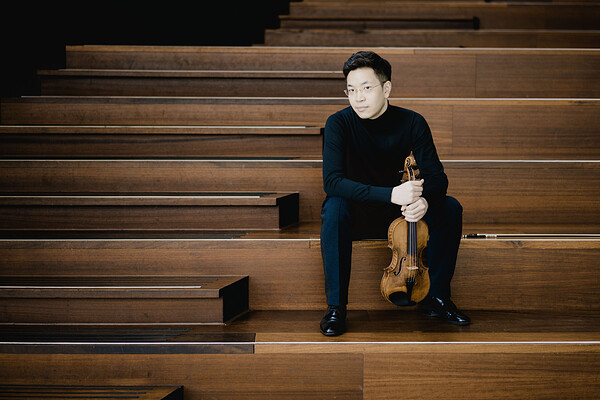Press
Review
Violinist finally makes Tucson debut, and it was worth the wait

Some things are worth the wait, like seeing the University of Arizona men's basketball team make it to March Madness as a No. 1 seed.
On Friday night, after two years of anticipation, New York violinist Paul Huang made his Tucson Symphony Orchestra debut.
Huang was supposed to play the Barber Violin Concerto with the orchestra on March 13, 2020, but the pandemic spoiled those plans.
On Friday, March 18, he made good on the date, performing Shostakovich's challenging Violin Concerto No. 1 in A minor.
Subscribe to stay connected to Tucson.
A subscription helps you access more of the local stories that keep you connected to the community.
Watching him tease out those somber melodies and frenetically scale the fingerboard to keep up with Shostakovich's furious note changes was worth the delay.
The last time the TSO performed the Shostakovich — 1993 — many members of the orchestra were likely in grade school. But on Friday night, they performed the 36-minute piece as if it were part of their musical DNA. TSO Music Director José Luis Gomez emphasized the somberness of the opening lament with softly played baritone-voiced cellos and basses that paved the way for Huang.
Huang coaxed all of the anxiety and emotion that Shostakovich intended when he composed the Violin Concerto in post-World War II Soviet Russia. The Russian composer and many of his contemporaries were constrained from composing from the heart in order to stay on the good side of Stalin so Shostakovich delayed the concerto's premier until after Stalin had died.
In an interview last week, Huang said the concerto resonates today with all that is happening in Ukraine.
His performance Friday night — the first of two this weekend — kinda felt like a prayer for Ukraine. His extended solo turn where fast-paced urgency melted into near silence with notes that whispered as they left his bow captured the imagination of not only us in the audience but the musicians on stage with him. The violin section and its leader, Concertmaster Lauren Roth, sat mesmerized as he played.
Gomez opened the concert with the Tucson premiere of local composer Daniel Asia's "Gateways," a high-spirited fanfare with brassy crescendos and graceful string passages.
The orchestra also performed Brahms's Symphony No. 4 for the first time in seven years.
Once again, it was worth the wait.
Gomez punctuated sweeping strings with clarion horns in the thrilling opening movement. The brass section set the tone for the second movement against a backdrop of pizzicato strings that added a percussive twang. In the third movement, rumbling timpani, a brass chorus and sweeping strings created a cinematic soundscape that was quietly interrupted by the triangle, that teeny tiniest of tools in the percussionist's arsenal that was just mesmerizing.
Gomez slowed the tempo in the beginning of the final movement that opened with the brass and woodwinds before the energy cranked up with the frenzy of strings and TSO principal flutist Alexander Lipay's singular voice in a moments-long solo turn.